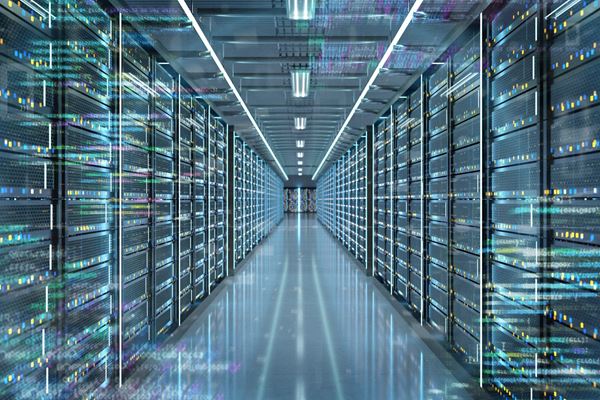Keeping Data Centers Cool: Best Practices to Avoid Overheating and Equipment Losses

Data centers are critical to business operations, serving functions from data storage to network management. These facilities rely on precise environmental controls to ensure the optimal performance of servers, storage arrays, and network switches. Deviations in temperature and humidity can cause equipment failures, data loss, and significant business disruptions. Effective management of cooling and redundancy is essential to prevent over-temperature events and hardware malfunctions, thereby minimizing downtime and financial loss.
This blog explores the complexities of data center cooling systems, the challenges they face, and best practices for maintaining their reliability and efficiency.
Data Center Cooling and Redundancy Essentials
Data centers vary in size and configuration, ranging from small rooms with a single server to massive facilities operated by tech giants like Amazon, Google, and Facebook. Regardless of size, their primary function is to house IT equipment that supports business operations. This equipment generates heat, necessitating robust cooling systems to prevent overheating.
Importance of Cooling Systems
Over-temperature events in data centers can cause various equipment failures due to components' inability to dissipate heat effectively. Specifically, batteries, power supplies, and mechanical hard disk drives are particularly vulnerable to high ambient temperatures. Common cooling methods include computer room air conditioners (CRAC) and computer room air handlers (CRAH), which use refrigerant and chilled water, respectively, to maintain optimal temperatures. Advanced cooling techniques such as liquid cooling and immersion cooling are also gaining popularity for their efficiency, despite higher costs and complexity.
Managing Humidity in Data Centers
Effective cooling involves not only temperature control but also humidity management. Low humidity can cause static discharge, while high humidity can lead to condensation, both of which can damage sensitive electronic components. To address this, data centers often use sophisticated HVAC systems equipped with humidifiers and dehumidifiers to maintain a stable environment. These systems are typically integrated with energy management systems that monitor and adjust conditions in real-time, ensuring compliance with industry standards like ASHRAE.
The Role of Redundancy in Preventing Failures
Redundancy is a critical aspect of data center design. Data centers must have backup systems to handle equipment failures, including power generators, redundant cooling units, power supplies, drives, data backups and sometimes data replication to another data center. The goal is to ensure continuous operation despite component failures. Regular maintenance and proper design are also crucial. Cooling systems should be distributed evenly throughout the facility to avoid hotspots, and the overall design should allow for scalability to accommodate future growth.
Despite these precautions, data centers are not immune to failures. Common issues include equipment breakdowns, pipe ruptures, fires and power outages, all of which can lead to significant downtime and financial losses. In the event of a cooling system failure, IT equipment can be in an over-temperature environment, leading to thermal throttling or shutdowns, affecting performance and causing business interruptions. Water damage from pipe failures and fires can be particularly devastating, damaging or destroying expensive IT equipment and leading to extensive repair and replacement costs. Therefore, data centers must be designed with potential failures in mind, routing pipes away from critical equipment and implementing robust monitoring systems to detect issues early.
Effective Strategies for Diagnosing IT Equipment Failures
To address IT equipment failures effectively, experts start by gathering evidence to support the plausibility of the event. This involves a thorough examination of the equipment, including component-level testing. For instance, when a server fails, subcomponents like CPUs, power supplies, and RAID (Redundant Array of Independent Disks) controllers must all be inspected. Understanding the technical details of these components is vital for accurate diagnosis. For example, RAID configurations provide redundancy, meaning a single disk failure does not necessarily result in data loss. Identifying the order of disk failures and the type of issue (firmware issue, wear and tear, physical damage etc.) is crucial for determining coverage and repair strategies.
The Role of Redundancy and Virtualization
In data centers, redundancy and virtualization are key to maintaining system reliability. Virtual servers, or virtual machines, are software-based servers that share the physical resources of a single hardware server. This setup allows multiple virtual servers to operate independently, each with its own operating system and function. When a physical server fails, it is essential to distinguish between the physical server and the virtual machines it hosts. This distinction impacts the scope of testing and repair costs. Data recovery companies may charge per virtual machine, so understanding the configuration and extent of the failure is critical for cost management. IT staff can perform an emergency power off (EPO) to prevent further damage in an over-temperature event. However, this corrective action can introduce additional issues, such as data corruption and synchronization problems.
Evaluating equipment behavior before, during, and after the event is essential to determine the true extent of the damage. Log files and temperature records provide valuable insights into equipment performance and help identify pre-existing issues exacerbated by the event. Additionally, understanding the specific requirements and configurations of the equipment, such as the RAID levels and type of hard drive interface (SCSI, SATA, SAS, etc.), is crucial for accurate diagnosis and repair costs.
When equipment fails, a detailed examination is necessary to confirm the behavior and identify faulty components. This process may involve testing individual parts, such as power supplies and hard drives, or replacing components with known good component to confirm an issue. By isolating and testing each component, it is possible to determine what needs repair or replacement. This methodical approach ensures that only necessary parts are addressed, reducing unnecessary costs and downtime.
Ensuring Resilience in Data Center Operations
As technology evolves, so do the methods for cooling and maintaining critical data facilities. Implementing the best/most current practices ensures that data centers will remain reliable, minimizing the risk of downtime and data loss. Similarly, managing IT equipment failures requires a thorough understanding of the technical details and a systematic approach to diagnosis and repair. By gathering evidence, examining components, and utilizing redundancy and virtualization, businesses can effectively address hardware malfunctions and minimize disruptions. Advanced cooling technologies, robust redundancy plans, and meticulous design and maintenance all support resilience and reliability of IT infrastructure, ensuring operational continuity and keep the digital backbone of our economy running smoothly.
Our experts are ready to help.


